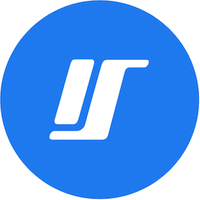intellectsoft News

Business enterprises from all over the world are focusing on building the apps to reach their target audiences more simply and proactively, solving their problems, and collaborating with a shared purpose.
Although the competition is fierce nowadays. According to Statista, as of the first quarter of 2020, Android users were able to choose between 2.56 million apps, making Google Play the app store with the biggest number of available apps. Apple’s App Store is the second-largest app store with almost 1.85 million available apps for iOS.
Applications generate revenue in several different ways, such as charging users a small amount of money for the use of an app (an average of 1.02 U.S. dollars per app in the Apple Store), charging for access to premium features of an otherwise free app or simply selling ad space.

More and more things are becoming connected nowadays, thanks to the development of technologies. The growth of tech tools and solutions makes it possible to create smart homes, a part of which are smart TVs.
Digital transformation makes it possible to develop engaging products that enhance user experience. Among these products are smart TV apps that allow end-users to choose the content they like, interact, and get seamless access to different channels. There is no limit to local or national channels anymore.
Smart TV apps development is similar to the mobile but has many peculiarities as TV platforms differ in their nature. Engineers can create games, media apps, utility apps, etc. using the frameworks and techniques they use for mobile operating systems (iOS, Android, etc.).

The development of the medical sphere doesn’t seem to stop — especially today. This year, the Black Swan factor of global pandemics created an extra burden for healthcare and increased the importance of medical service quality.
According to Deloitte, the overall spending on healthcare is expected to grow by the year 2023. And after the lockdown experience, the demand for healthcare software development solutions has also increased.
In the new reality, the majority of medical organizations lack experience in working with healthcare software solutions. For this reason, we’ve collected everything you need to know about healthcare software development and provided recommendations to help your company or organization benefit from the new rules.

The global market for the Internet of things (IoT) reached $100 billion in revenue for the first time in 2017, and forecasts suggest that this figure will grow to around $1.6 trillion by 2025.
With such a prognosis, the technology is predicted to step far ahead than anyone can possibly imagine. But with the rise in popularity of IoT devices, there will be a rise in IoT app development as well as security challenges and issues.

IoT in Insurance: Use Cases of How the Modern Industry Works
The insurance sector is demonstrating dramatic development. Being generally innovative, insurers gain the most of their current benefits with the involvement of IoT.
In a recent couple of years, all the trustable observers honored the achievements of IoT in insurance. For example, according to McKinsey, the appearance of the digital ecosystem enabled partnering between insurers and outside companies to provide cross-industry service.